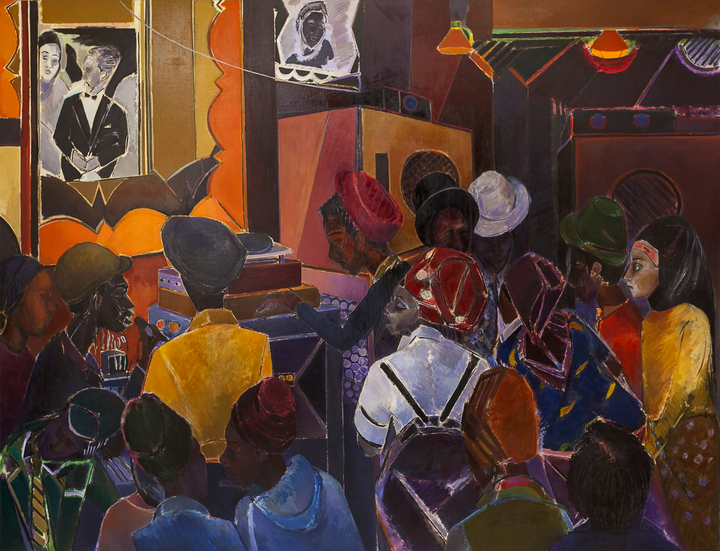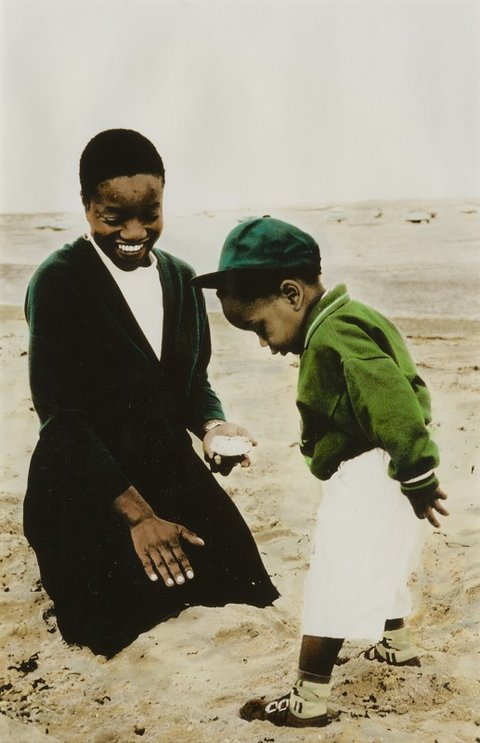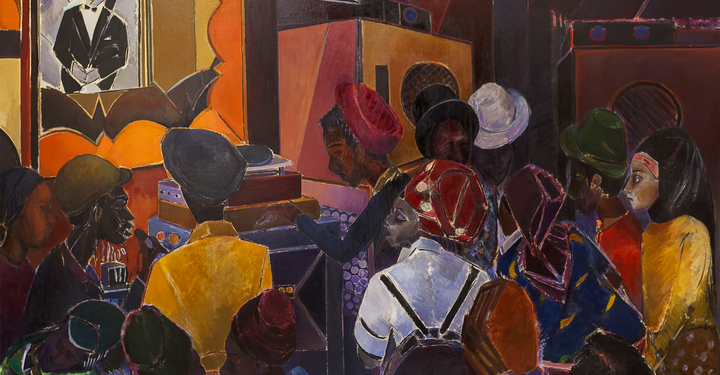Life Between Islands explores the artworks of Caribbean-British artists over four generations. Tate Britain presents Caribbean-British culture that spanned for 70 years and expressed in many artworks, such as visionary paintings, sculpture, film, fashion, and documentary photography.
This exhibition is featuring 40 artists, including those of Caribbean heritage as well as those inspired by the Caribbean, such as Ronald Moody, Frank Bowling, Sonia Boyce, Claudette Johnson, Peter Doig, Hew Locke, Steve McQueen, Grace Wales Bonner, and Alberta Whittle.
Life Between Islands tells the story of the Caribbean-British population to build their new identities and communities in Britain, embedded in British culture and transformed what British culture and society looks like today. Their influence appears for example, in reggae and dub to the annual carnival.

Denzil Forrester, Jah Shaka, 1983. Collection Shane Akeroyd, London © Denzil Forrester. https://www.tate.org.uk/
Jah Shaka (1983) by Denzil Forrester is one of the artworks on display in this exhibition. It depicts colorful nightlife in a city. A DJ standing among crowd people. The combination of warm and cool colors succeeds to create a vibrant painting. Forrester was inspired by iconic DJs from the dub scene, like Jah Shaka. This painting represents the life in London’s Black British communities that celebrate diversity.

Ingrid Pollard, Oceans Apart, 1989. Tate Purchased 2013.© Ingrid Pollard. https://www.tate.org.uk/
Another exhibited artwork is Ingrid Pollard’s hand-tinted silver prints entitled Oceans Apart (1989). This picture portrays a mother playing with her son on the beach sand. It suggests the power of life and love in everyday moments. Pollard gets her insight from the coastal areas of the Atlantic Ocean along the eastern shores of the Caribbean to the Atlantic coast of America. This area connects the Caribbean coast to the western shores and England and Europe. This site is a physically and psychologically important spot as it is an arrivals and departures place.
This exhibition features British-Caribbean artists throughout history from the Windrush generation who came to Britain in the 1950s, the Caribbean Artists Movement, the rise of Black Power in Britain in the 1970s and 80s, to the 2000s Caribbean-British artists. It will also explore an informal group of creatives like Paul Dash and Althea McNish, who created tropical modernist textile designs inspired by the Caribbean landscape.
The rise of Black Power in Britain is expressed in Horace Ové’s photographs of Stokely Carmichael and Neil Kenlock’s Black Panther school bags in 1970. The exhibition also includes a new iteration of Michael McMillan’s The Front Room, “a reconstruction of a fictional 1970s interior, evoking the role of the home as a safe space for social gatherings at a time of widespread prejudice”.
Works from the Black Art Movement of the 1970s and 80s depicted the social and political struggles encountered by second-generation members of the Caribbean-British community. For example, Dennis Morris’s and Vanley Burke’s photographs depict everyday scenes of love, family, and social life during struggle and hardship.
Some artists work in the opposite direction from Britain to the Caribbean, like Peter Doig and Chris Ofili who relocated to Trinidad in 2003.
Life Between Islands will be on view from 1 December 2021 – 3 April 2022 at Tate Britain.


